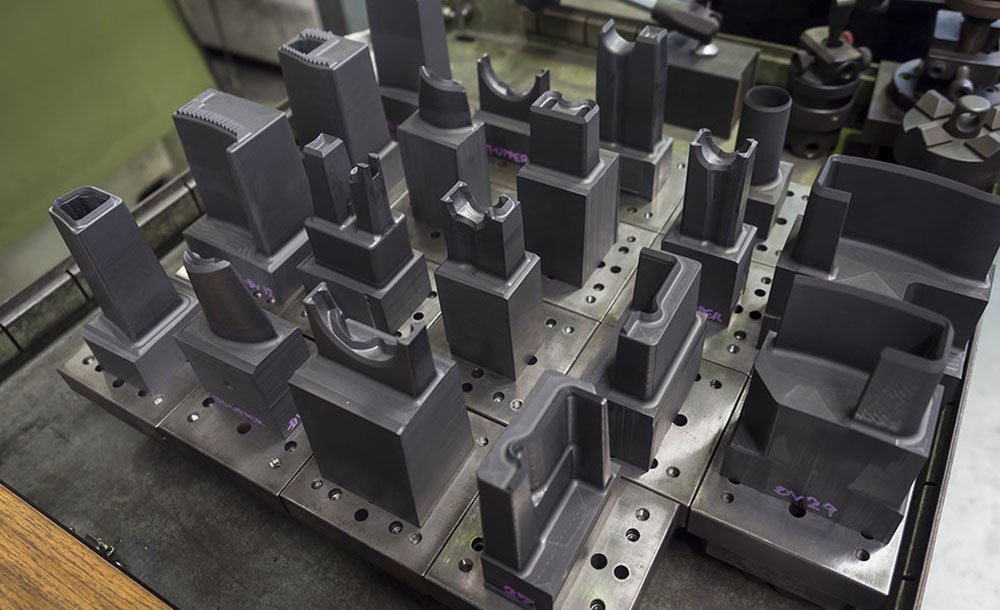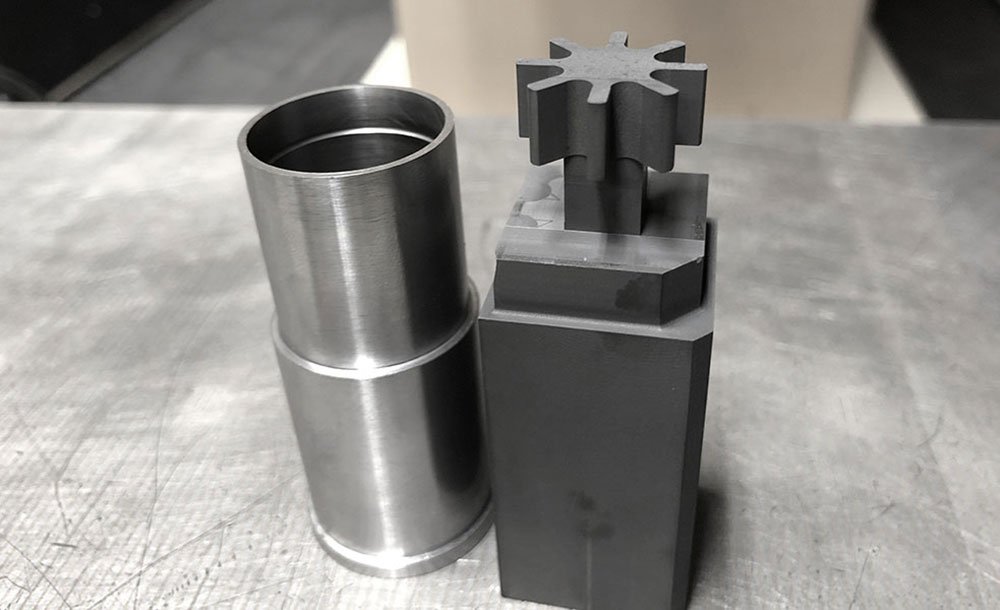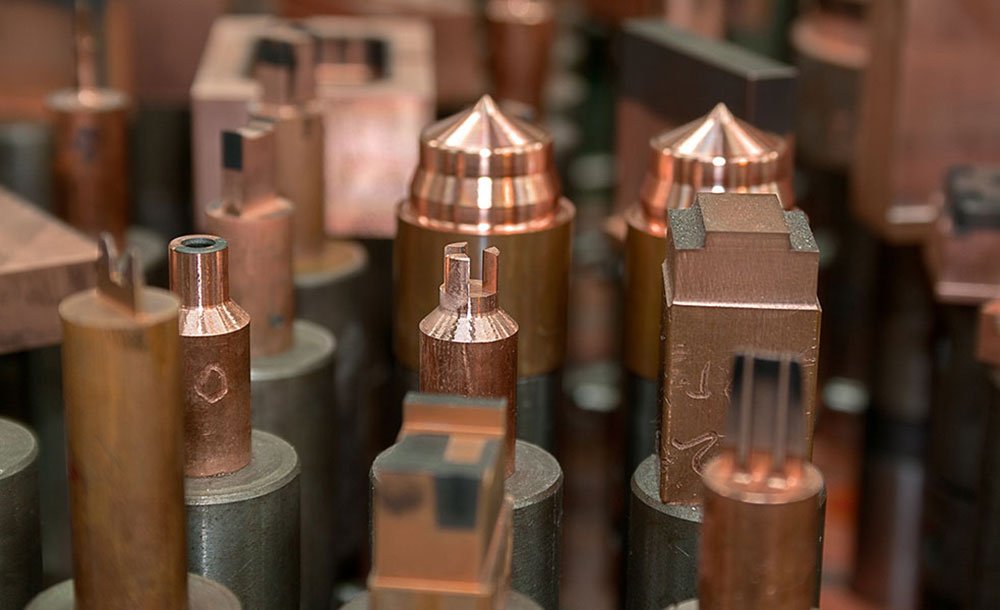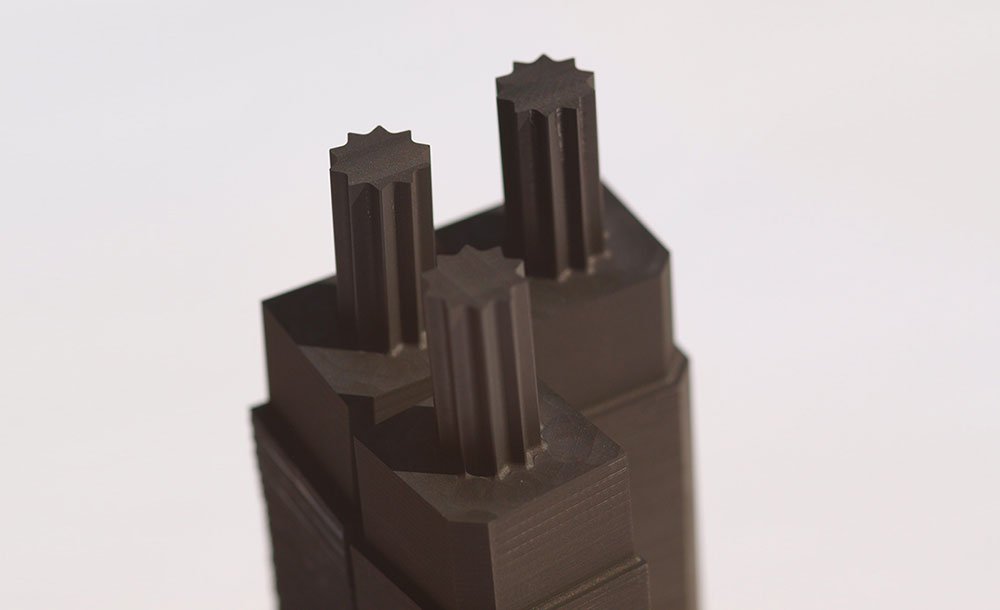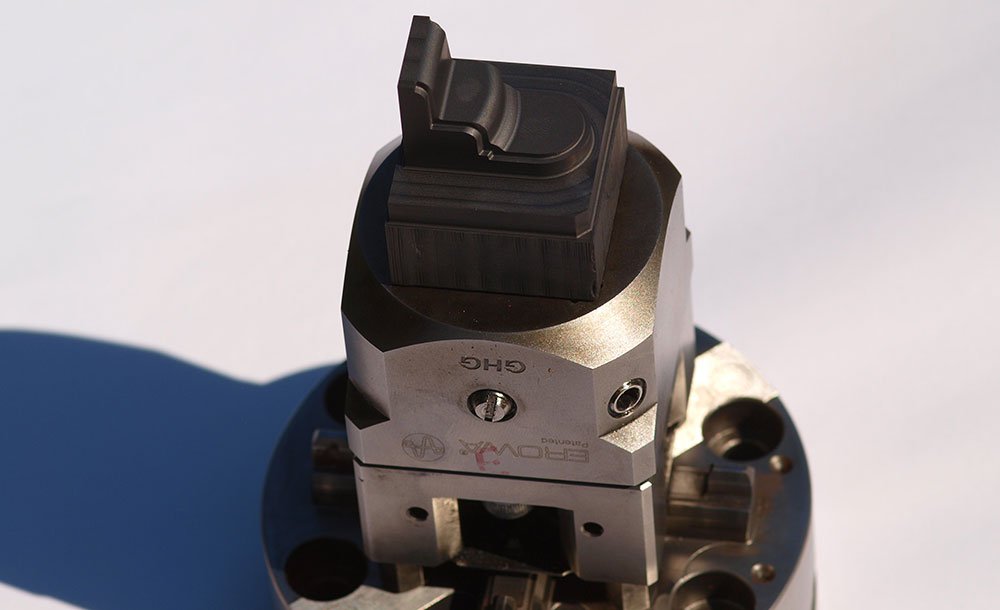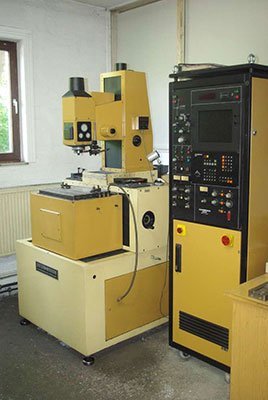
Eroding technology – professional tool & mold construction
Do you need a competent partner in the field of erosion technology? As a professional company, we offer you a wide range of services for many areas of application. Our customers benefit from our expertise in erosion technology, laser technology, engraving technology and milling technology.
For the fields of automotive, medicine, mechanical engineering and electrical engineering, we have been working with a wide variety of workpieces and materials for a long time. With the help of the most modern machines and the best methods, we can precisely process almost anything without mechanical stress. We realize finest surfaces. Within the shortest possible time, we implement your ideas with high precision – no matter how complex they may be.
Tools and complex shaped objects can be produced by means of erosion. Parts that have more complicated contours can be produced by the erosion technique. Mainly, EDM is used for the production of high-precision metal parts. Usually, the process of EDM involves machining the object to be machined in a dielectric. A dielectric is a non-conductive fluid. The objects are usually 3D metal parts and conductive. The tool has a negative voltage and is brought to the object to be machined. Small discharges and sparks are created. This is how material is removed from the object.
Connection eroding
Furthermore, we offer tie-in eroding for plastic molds and silicone molds.
Especially in the silicone area it is important that the hot mass is injected evenly in a multiple mold.
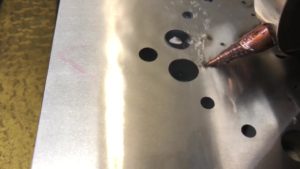
Frequently asked questions
What is EDM?
EDM technology describes the various machining processes of electric discharge machining or spark erosion. EDM is one of the most important processes for manufacturing workpieces. With the process of erosion, modern machines are used to produce high-precision molds and metal parts within a very short time. Conductive materials, such as aluminum, brass, steel or copper, are removed by electrical discharge. The workpiece is machined in the dielectric – a non-conductive fluid. The tool – the electrode – has a negative voltage with respect to the workpiece to be machined. It is brought up to the workpiece without touching it directly. In this way, the material is constantly discharged and removed. This creates sparks, which is why this EDM process is also called spark erosion. Our highly modern machinery and many years of experience ensure precision and quality.
What is toolmaking?
Toolmaking is understood to mean the production of tools and devices for special branches of industry. This plays an important role for the work preparation in the production company. In order to produce the tools, a special vocational training and constant further training in this field are required. Nowadays, CNC machines are mostly used in the production of tools.
Tool making can be divided into different steps. First of all, the construction is started. First, criteria of the tool are defined in the design department. Then, with the help of the criteria, a part drawing is created. In principle, three-dimensional CAD programs are used for this. Now a sample part is produced on the basis of a simulation. After complete optimization and corrections, detailed drawings are created for the tool.
Cost-intensive and complex tools are produced, therefore the complete production needs a lot from the development on. Finally, the tool has to be tested and finally approved. Then the tool can go into production.
Mechanical departments
The tool shop is divided into the mechanical departments milling shop, turning shop, grinding shop and erosion technology. All departments have CNC-controlled technology. Another independent department in toolmaking is often metal construction. In metal construction, workpieces such as housings and covers are manufactured. Cutting is part of every tool shop. The metal construction department is also responsible for this. Another area is the hardening shop. This is where the tool steels are hardened. In addition, the workpieces are annealed stress-free to ensure good mechanical processing.
All departments work together in such a way that a smooth process is ensured.
Why is GHG Gießler und Stücker GbR the right partner?
We manufacture individual parts and small series for the automotive, electrical and food industries. With us you get everything from one source. Due to our adherence to delivery dates and flexibility, you can always rely on a smooth working process. We offer a wide range of services and realize finest surfaces. With our modern machinery we process the workpieces precisely and without mechanical stress. We implement even the most complex ideas within the shortest time of the highest quality.
Through many years of experience and extensive knowledge we can offer you a competent service. Our qualified team always works with passion to satisfy our customers. With us you get high quality and sophisticated manufacturing results.
How does die-sinking EDM work?
We also offer the service of die-sinking EDM.
In die-sinking EDM, the workpiece is in deionized water or non-conductive oil. While the machine head with the electrode – the tool – performs a movement in the z-axis, the table moves in the x- and y-axis. The electrode (cathode) is made of copper or graphite. The electrode is slightly smaller than the anode because the spark jumps through the dielectric as the cathode approaches the anode.
In sink erosion, the negative shape of the electrode creates a positive imprint in the electrically conductive workpiece. No voltage is created in the workpiece, but a high surface finish is left. The material is removed by evaporation or melting. A gas bubble created in the dielectric transports the removed material away and the dielectric is constantly filtered. In order to be able to machine several batches on the workpiece, there are so-called CNC-controlled machines for the die-sinking EDM process.
Die-sinking EDM is also used as a preparation for wire EDM. Die-sinking EDM creates the starting hole in steel that is already hard. The EDM wire is then threaded into this hole.
Benefit from our many years of experience. With us, customers get everything from a single source. With high-quality and modern technology and a top-equipped machine park, we realize your wishes quickly and environmentally friendly.
Advantages of die sinking
Die-sinking EDM offers several advantages over other manufacturing processes. The workpiece is precisely machined, resulting in a clean surface structure and high quality. The process is also suitable for the most complex contours. Moreover, only low tool costs have to be incurred for die-sinking EDM. All electrically conductive materials can be machined. Sharp-edged geometries can be realized with die-sinking EDM even at great depths.
Take advantage of our design, engraving, milling and EDM services. We will be happy to assist you as your expert contact.
What is wire EDM?
Wire EDM is a cutting process used to form high-precision workpieces. The materials of the workpiece are electrically conductive. Wire erosion works in a similar way to electrical discharge machining. Material is removed by the sparks of electrical voltage pulses. A thin, permanently passing wire serves as the electrode. Material is transferred from the workpiece to the thin wire and into the dielectric. The wire is used only once. In order for the wire eroding process to be as precise as possible, the spark must be transferred exactly where the distance between the workpiece and the eroding wire is as small as possible.
During the cutting process, the EDM wire is wound on a spool and guided over several rollers to the wire guide. At the rear part of the machine there are two opposite drive rollers. The eroding wire is pulled through these with a certain tension and speed. Vibrations are avoided with the help of the wire guides above and below the workpiece. Some machines use erosion oil as dielectric instead of deionized water. The resulting erosion waste is disposed of by the dielectric from the cutting gap. Basically, the eroding wire is positively poled and the workpiece is negatively poled.
An electric field is formed at the point with the smallest distance between the eroding wire and the workpiece. In this electric field, positively and negatively charged ions are strongly accelerated. These in turn form an ionized channel between the workpiece and the electrode. The channel conducts electricity. A collision of the ions in the discharge channel produces a visible spark. Meanwhile, a gas bubble is formed from the evaporating liquid and material. The pressure in the bubble creates plasma. The gas bubble increases in size and finally implodes due to a pulse break. The implosion tears molten material from the workpiece and from the electrode.
What are CNC machines?
The abbreviation CNC stands for Computerized Numerical Control. With the help of CNC machines, a manufacturing process no longer requires constant supervision of production by human personnel. The production is done automatically and with high precision. The most modern control technology is used for the CNC machines.
What other types of erosion are there ?
Drill EDM
In the case of drilling EDM, individual pieces are manufactured with single holes and simple starting holes. Regardless of the hardness of the material, the smallest holes can be made. During the process there is a uniform burn-off and rapid removal at the , as the electrode rotates.
Disc erosion
In disc erosion, rotating copper, copper-tungsten or graphite discs serve as electrodes. The graphite is conductive in this process. The process of disk erosion is used, among other things, in automotive engineering and medical technology.
In which fields do we apply erosion technology?
Erosion technology is used in toolmaking to produce, among other things, cutting tools, injection molds, or parts with complicated contours. Casting molds, dies or punches can be produced. The company GHG Gießler und Stücker has been working for a long time with a wide variety of parts and materials for the automotive, mechanical engineering, electrical engineering, food industry and medical sectors in toolmaking. You are welcome to benefit from our many years of experience in the fields of milling, laser, engraving and erosion technology.
What other services do we offer our customers?
You need more information and would like to take advantage of our other services? We are the right contact for erosion technology, laser technology, engraving and milling. For the fields of medicine, automotive, electrical engineering and food industry we work highly precise with our modern machinery.

